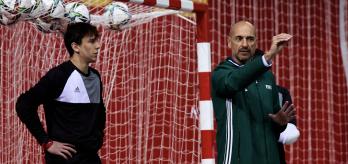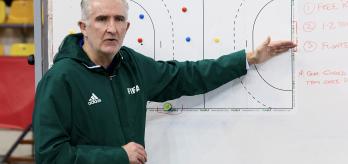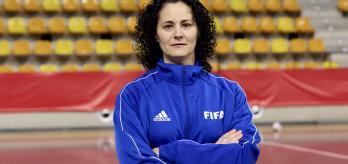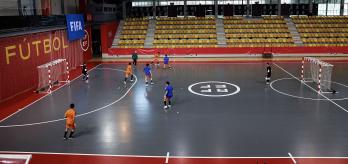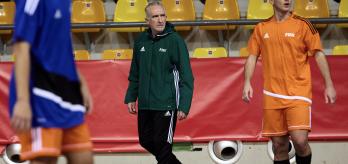In this interview, the experienced high-performance expert looks at the physical requirements of futsal, how to improve performance and tips for coaches designing training sessions.
Watch interview
Read interview summary
The physical characteristics of futsal
Phillips notes the similarities between futsal and football in that both are high-intensity, intermittent-sprint sports that place extreme demands on both the anaerobic and aerobic systems.However, while a football player might cover ten to 12 kilometres in a game, this figure drops to three to four kilometres in a futsal match. Phillips notes that while players do not reach the same speeds in futsal because of the size of the pitch, there are other physical challenges due to the continuous changes of pace (acceleration and deceleration) and direction.
Futsal players certainly still need the ability to sprint. As Phillips explains, there are perhaps 30 high-intensity sprints within a game, as well as 80 to 100 accelerations and decelerations, and potentially more than 1,000 explosive movements. This requires speed, strength, power and a well-developed neuromuscular system, which can be honed through agility training.
Improving performance
Phillips points out that research on futsal is sparse. More research would serve as a framework to develop the training of future players.He adds that using technology such as GPS tracking devices would provide a better understanding of the game. He notes that some good research is being undertaken in Spain and Portugal using local positioning systems, which could help with the understanding of accelerometry-type data in terms of sprints and explosive movements.
Developing training sessions for coaches
Phillips believes that, when developing training sessions, a lot depends on the competition schedule.This determines the amount of training time available. In any case, he highlights the need to stress the aerobic and anaerobic systems and to work on speed, repeated speed and repeated sprint ability.Furthermore, Phillips says that there could be more emphasis on strength training because of the nature of the decelerations in futsal, and that improving hamstring strength could reduce the risk of injury.
A game-based approach to training
Phillips thinks that many of the physicality requirements can be developed within the game itself, but others need to be developed outside of the game. He emphasises the phrase “Train as you play.”He says that designing training based on the game, such as by using small-sided games in confined areas, is a good starting point.




